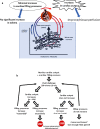The fluid challenge
- PMID: 33371895
- PMCID: PMC7771055
- DOI: 10.1186/s13054-020-03443-y
The fluid challenge
Conflict of interest statement
JLV is Editor-in-Chief of
Figures

Comment in
-
Letter to the Editor: Stroke volume is the key measure of fluid responsiveness.Crit Care. 2021 Mar 15;25(1):104. doi: 10.1186/s13054-021-03498-5. Crit Care. 2021. PMID: 33722261 Free PMC article. No abstract available.
-
Volume Management and Central Venous Pressure During Minimally Invasive Extracorporeal Circulation.Innovations (Phila). 2022 May-Jun;17(3):250-251. doi: 10.1177/15569845221091566. Epub 2022 Apr 14. Innovations (Phila). 2022. PMID: 35422143 No abstract available.
References
-
- Weil MH, Henning RJ. New concepts in the diagnosis and fluid treatment of circulatory shock. In: 13th annual Becton, Dickinson and Company Oscar Schwidetsky Memorial Lecture. Anesth Analg. 1979;58:124–32. - PubMed
Publication types
MeSH terms
LinkOut - more resources
Full Text Sources

